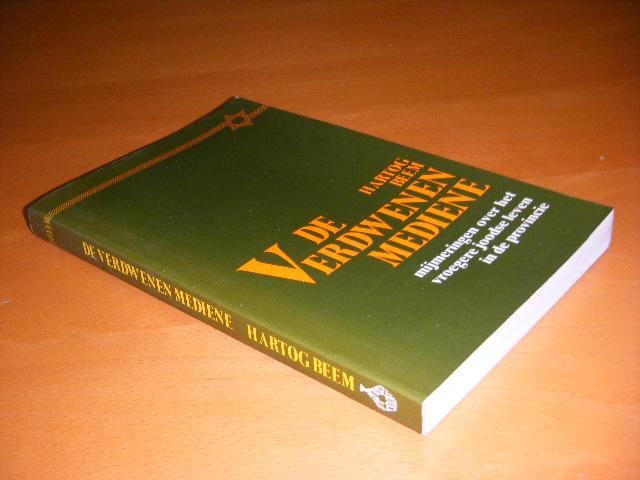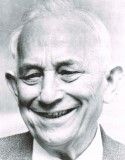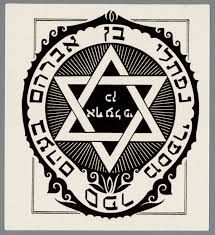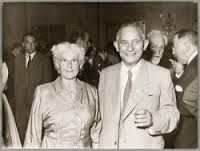Hartog Beem
(1892-1987)
Hartog Beem, Naftali ben Avraham, was born in Harderwijk on 13 December 1892. He was the son of Abraham Beem and Eva de Vries. Abraham de Vries ran a textile shop. After Hartog the couple had two more sons: Emanuel (born January 4, 1894) and Jozeph (June 23, 1899). It was a religious family. Hartog finished the primary school. In the afternoon, after school, he went to the Jewish school. These studies aroused his interest in Yiddish, Hebrew and Jewish history. He continued at the high school and afterwards at a Pedagogical Academy.
In 1913 Beem officially became a teacher (and remained so ever since). During the evening hours he continued his studies. In 1917 he was qualified to be a headmaster and in 1928 he became officially qualified as a German teacher at high school level. In 1914 Beem was drafted in Den Helder, where he met his future wife Retje Kannewasser (Rechele bat Eliezer Shlomo, born April 20, 1896). She was the daughter of Salomon Aron Kannewasser and Jansje Leon Beek, who had fifteen children (some of who passed away at a young age). In 1915 Beem left Harderwijk for Zierikzee, where he became a schoolteacher. In 1919 he moved to Dordrecht. On August 24, 1920 Hartog and Retje married in the synagogue of Den Helder. The couple settled in Dordrecht, where their son Salomon Abraham (Salo) was born on May 17, 1925. Meanwhile, his two brothers had also left Harderwijk: Emanuel moved to Winschoten and Jozeph to Oss. Eventually the parents, Abraham and Eva Beem - de Vries also moved to Winschoten, to live near Emanuel. In 1922 Hartog enrolled at the University of Utrecht, where he intended to specialize in Dutch Yiddish. In 1929 the Beem family moved to Leeuwarden, where Hartog would teach German at the local High School (HBS). In 1931 their son Salo died in a tragic car accident. A year later (on May 21, 1932) their daughter Eva was born, followed in 1934 (June 12) by Abraham (Bram).
Shortly after the German invasion and occupation of The Netherlands in May 1940, the Germans issued numerous anti-Jewish measures. One of them would forbid Jewish children to attend public schools. They all had to move to Jewish schools, with Jewish teachers only. Although he originally refused to do so, Beem was appointed in 1942 as rector of the Jewish Lyceum.
To escape deportation, Hartog and Retje went into hiding with friends, Willem and Diny Koster van Groos. Their children Eva and Bram were hidden in Ermelo by the Hillebrandt family, under false names: Lini and Jan de Wit. From there the children wrote 61 letters to their 'aunt and uncle' in Leeuwarden. They were betrayed. In February 1944 Eva and Bram were arrested and transported to Westerbork and from there to Auschwitz, where they were murdered on March 6, 1944.
After the arrest of the children the hiding address of the parents became unsafe. They were moved to another family, Gerlof van der Meer and his wife in Joure, Friesland, where they stayed till the liberation in 1945.
After the Shoa it became clear that no near relatives had survived. Hartog's father had died already in 1937. His two brothers, Emanuel with his wife Frouwke and their daughter Eva, and Jozeph with his wife Henriette and their children Abraham and Joseph were all murdered in Auschwitz and Sobibor. Beems father had died before the war, his mother, Eva Beem-de Vries, passed away in October 1942, in the Jewish psychiatric institution Apeldoornsche Bosch – a few months before the whole staff and all patients were deported to Auschwitz.
After the Second World War the couple returned to Leeuwarden. At the initiative of Hartog Beem, the Leeuwarden Jewish community erected on May 4, 1949 a monument in the Jewish cemetery in memory of the Jews deported from Friesland. Beem chose a quote from Jeremia as its text (31,15). Till 1958, when he and his wife moved to Hilversum, Beem chaired the decimated Leeuwarden Jewish community. The large synagogue in the Sacramentstraat, Leeuwarden, was saved, but only used on holidays and special occasions. In 1964 Beem, then the honorary chairman of the community, officially closed the synagogue and arranged that the Holy Ark, most Torah scrolls, the Bima and two stained glass windows were transferred to the synagogue of the children’s village Kfar Batya in Israel.
In Leeuwarden Hartog Beem started his career as a writer. In the course of the next decades, he published numerous articles and several books on Jewish communities in the Netherlands. Already in July 1945 he wrote about the fate of Jewish children, hidden during the war by Dutch families, for the Dutch newspaper Trouw. This problem would occupy the Jewish community for many years to come. During many years he contributed to the Jewish weekly Nieuw Israelietisch Weekblad (NIW) under the pseudonym Af al pi: ken (meaning: despite everything: yes), which became his motto. In numerous articles and columns Beem regularly expressed concern about the fact that even after the Shoa, hate against the remaining Jews had not disappeared. Anti-Semitism disturbed Beem as much as Christian mission to Jews, anti-Jewish vocabulary in newspapers and dictionaries, and by anti-Israel statements, which he rightly described as an excuse for anti-Semitism.
His memories of Harderwijk, the town of his birth, enabled Beem to recreate the atmosphere of the "mediene" (provincial Jewry). His book De Verdwenen Mediene, a collection of articles originally written for the NIW, was published in 1949, and reprinted since. Another monumental study is De Joden van Leeuwarden (1974). Other books are: Jerosche, on Yiddish words and expressions used in the Netherlands and She'erith, “Remainders of a language”, a short dictionary of Dutch Yiddish.
Following an invitation from Dr. Jozef Michman, Beem came to Yad Vashem in Jerusalem to start the Pinkas Hakehillot Holland, on the history of the Jews in the Netherlands (published in Hebrew in 1985, and in Dutch in 1992 and 1998-[ISBN 90-6117-291-8])
Beem authored over four hundred articles and several books on Dutch Jewry and Dutch Yiddish, some of which are still considered as standard works. His work earned him several honors. In 1970 Prince Bernhard decorated him with the Zilveren Anjer for his contribution to the language and culture of Dutch Jews. In 1980 Beem received the Piter Jellespriis for his contribution to the literature and history of the Jewish community of Friesland. In the same year, the Commission for the History and Culture of the Jews in the Netherlands (at that time part of the Royal Academy, now part of the Menassse ben Israel Institute, initiated the Hartog Beem Prijs. Since 1983 fourteen times prizes have been awarded to promising young University students, the fifteenth time is scheduled for 2016.
He and his wife were traditional, orthodox Jews, but they showed tolerance towards other interpretations of Judaism. Beem used to say that the Creator had a large zoo!
When he and other Jewish notables and rabbis were invited to an audience with Queen Juliana, Beem was the only one without a kipah. When asked for the reason, he replied that in the presence of royalty one is supposed to take one’s hat off, adding “the law of the country is law” (dina de-malchuta dina).
In 1973 his wife Retje passed away. She was buried at the Jewish cemetery of Hilversum. The inscription on her tombstone reads: "Her life was love and faithfulness". In 1979 Beem moved to the Jewish old age home in The Hague, and in 1981 to the Jewish old age home in Rotterdam, where he passed away on the 1st of December 1987. He was buried alongside his wife. On his tombstone his motto and pseudonym אף על פי כן was engraved “despite everything: yes.”
After Beems death, rabbi Edward van Voolen, in consultation with a relative, ordered a small tombstone bearing the names of the two murdered children Eva and Bram. (Salo, who died before the war, has a tombstone in the Jewish cemetery of Leeuwarden).
An unexpected surprise was the discovery of the letters of Bram and Eva Beem in 1988, when the house in Leeuwarden where Hartog and Retje Beem had been hiding was renovated. These letters were handed over to the Joods Historisch Museum in Amsterdam, which also houses other valuable photographs and documents related to Hartog Beem and his family.
This text is based on:
Edward van Voolen, “Hartog Beem”
Anton Daniels en Nico de Bruijne, "Joodse Harderwijkers", Harderwijker Reeks 23,
Harderwijk 2014, p. 157-173, ISBN: 9789077571156, ISBN-10: 9077571159
Internet:
website Joods Historisch Museum
website Joods Monument
Extracted from source:Yael Benlev (reviewed by Anton Daniels)
Translated from Dutch:Michael Jamenfeld
Final editing, review & revision:Rabbi Drs. Edward van Voolen
ISBN of publications of Hartog Beem mentioned in the article:
De Verdwenen Mediene 90 6446 0183
De Joden van Leeuwarden 9789023212188
Jerosche 908041901X
Resten van een taal (She'erith) 9789023213314
 |

|

|
 |